Patriot Viper III Review: 2x4 GB at DDR3-2400 C10-12-12 1.65 V
by Ian Cutress on November 18, 2013 1:00 PM ESTIGP Compute
One of the touted benefits of Haswell is the compute capability afforded by the IGP. For anyone using DirectCompute or C++ AMP, the compute units of the HD 4600 can be exploited as easily as any discrete GPU, although efficiency might come into question. Shown in some of the benchmarks below, it is faster for some of our computational software to run on the IGP than the CPU (particularly the highly multithreaded scenarios).
Grid Solvers - Explicit Finite Difference on IGP
As before, we test both 2D and 3D explicit finite difference simulations with 2n nodes in each dimension, using OpenMP as the threading operator in single precision. The grid is isotropic and the boundary conditions are sinks. We iterate through a series of grid sizes, and results are shown in terms of ‘million nodes per second’ where the peak value is given in the results – higher is better.
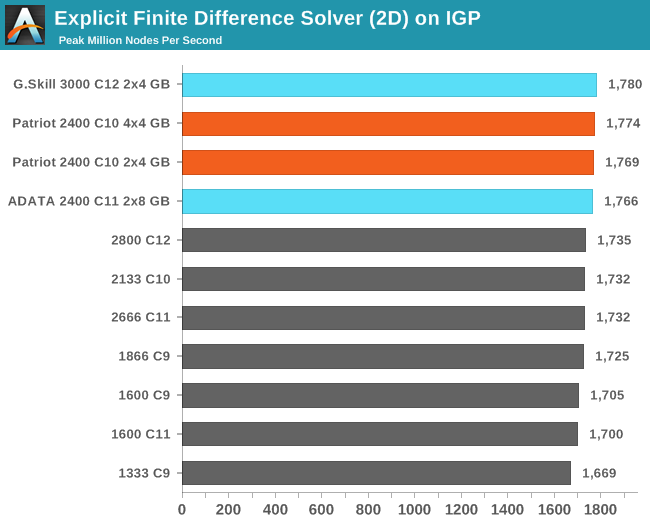
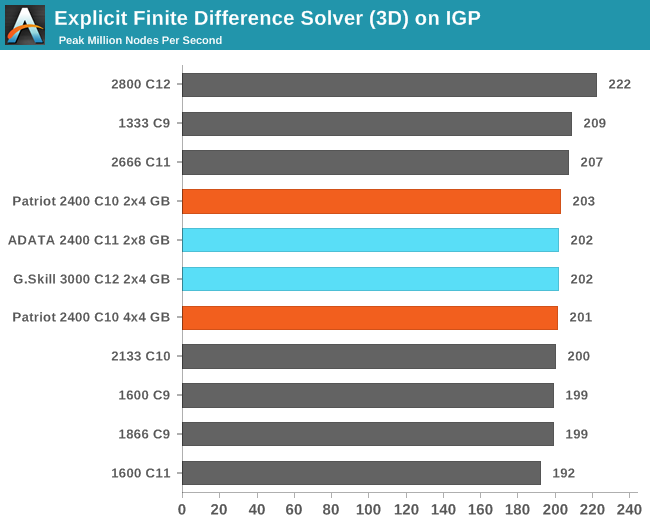
N-Body Simulation on IGP
As with the CPU compute, we run a simulation of 10240 particles of equal mass - the output for this code is in terms of GFLOPs, and the result recorded was the peak GFLOPs value.
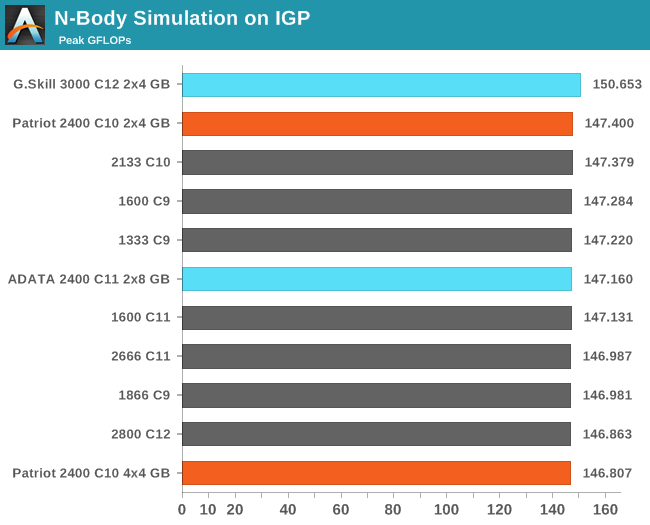
Matrix Multiplication on IGP
Matrix Multiplication occurs in a number of mathematical models, and is typically designed to avoid memory accesses where possible and optimize for a number of reads and writes depending on the registers available to each thread or batch of dispatched threads. He we have a crude MatMul implementation, and iterate through a variety of matrix sizes to find the peak speed. Results are given in terms of ‘million nodes per second’ and a higher number is better.
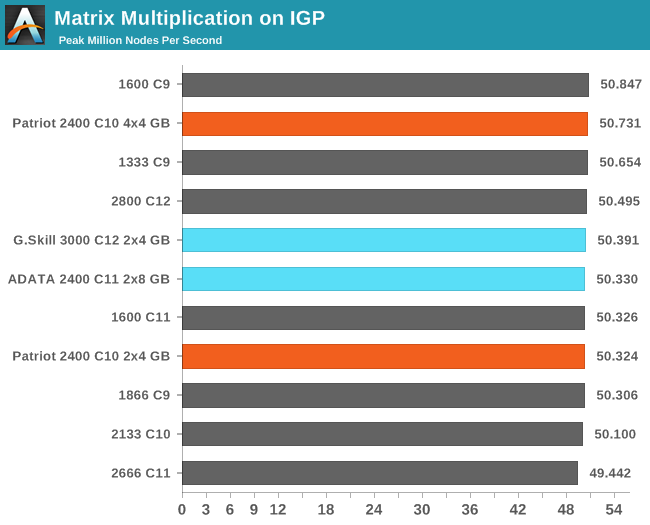
3D Particle Movement on IGP
Similar to our 3DPM Multithreaded test, except we run the fastest of our six movement algorithms with several million threads, each moving a particle in a random direction for a fixed number of steps. Final results are given in million movements per second, and a higher number is better.
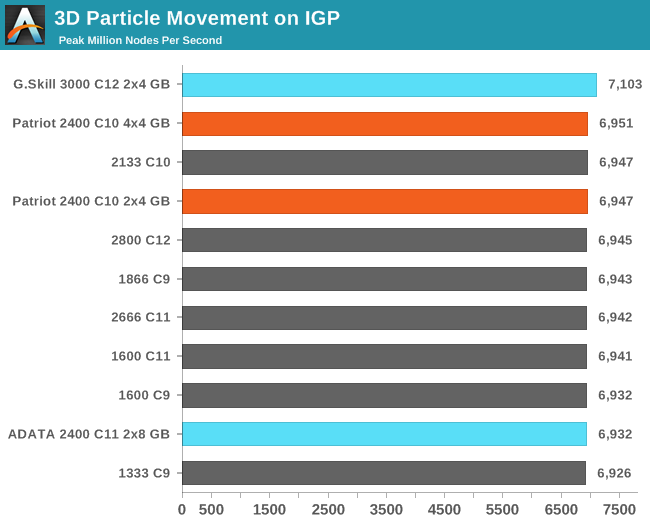










48 Comments
View All Comments
jabber - Tuesday, November 19, 2013 - link
Indeed, or for those of us that found girls, moved out, got older, changed hobbies, just realised that running benchmarks all day is a waste of life or found that actually the world doesn't end if you don't upgrade your PC every 6-12 months.There is a need for some sites that analyse how the current $60-$200 GPUs compare with those of 5 years ago, same for CPUs etc. Big market for that kind of info but unfortunately all we get is "this sites for enthusiasts noob!" well thanks but I'm still an enthusiast but now I have a mortgage or I'm only earning half what I was 5 years ago.
The info I get from Anandtech I can get anywhere......
Shadowmaster625 - Tuesday, November 19, 2013 - link
In the conclusion you should add one bar to one of your charts... a bar where the RAM is at 1600 but the cpu is clocked just 100MHz higher, to really highlight how little impact memory speeds have on performance compared to even a tiny cpu clock speed boost.jabber - Tuesday, November 19, 2013 - link
Buy whatever matches best with your motherboard and GPU colour scheme I say.ShieTar - Wednesday, November 20, 2013 - link
Of course. And never overclock your memory when there is a full moon.D1RTYD1Z619 - Tuesday, November 26, 2013 - link
or if you have pickles in your fridge.rmh26 - Tuesday, November 19, 2013 - link
Ian can you give a little more information about the size of your CPU computer benchmarks specifically the grid size on the finite difference problems. In my experience memory bandwidth plays a large role in the speed of the computation. There are many HPC applications that have memory as the bottleneck and I'm wondering if your problem size is small enough that it is being efficiently handled by the cache and the ram speed isn't making much of an influence. In know in my own CFD code going from 1600 to 1866 showed an almost linear speed up.UltraWide - Tuesday, November 19, 2013 - link
Did you have a chance to remove the heat-spreaders to see which ICs are in these? I am assuming Hynix MFR?Gen-An - Tuesday, November 19, 2013 - link
Hynix DFR actually. 2Gbit ICs (256MB each) so the same size as CFR but with nowhere near the overclockability.